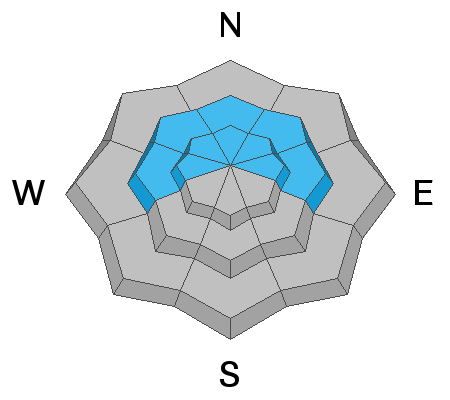High pressure will continue over Northern Utah today, allowing for mostly clear skies and warm temperatures. Temperatures will rise into the mid 30's °F at 8,500', and you might see the occasional mid-to-high cloud stream by overhead; otherwise, it will be sunny. The current mountain temperatures are inverted with the 11,000' temperature at 25°F and the 7,400' temperature at 13°F. Winds are currently from the southwest at speeds of 10-15 mph across the upper elevations.
Backcountry riders can find Greg's excellent Week in Review
HERE. The string of remotely triggered slides continues to pour into the UAC. Be sure to look at all of these reports with photos/videos, etc. can be found under
Observations and Avalanches in the menu above.
Of note: was an avalanche out of
Hidden Canyon near Brighton Ski Resort. This avalanche was on a northerly facing slope at 9,600' in elevation. It failed roughly 600' wide and anywhere from 2-4' deep, running into a nasty terrain trap that terminates into thick trees. The avalanche was reported by someone else to Brighton Ski Patrol, and upon inspection, it showed two tracks entering the avalanche with no tracks coming out the bottom. Brighton & Solitude Ski Patrols were called into the scene, and they were able to use Recco, along with two dog teams, to search the debris field. Luckily it was determined that nobody was caught in this avalanche. Please, if you trigger an avalanche, report it. There is no need to put others in harm's way if nobody is caught in the avalanche.









